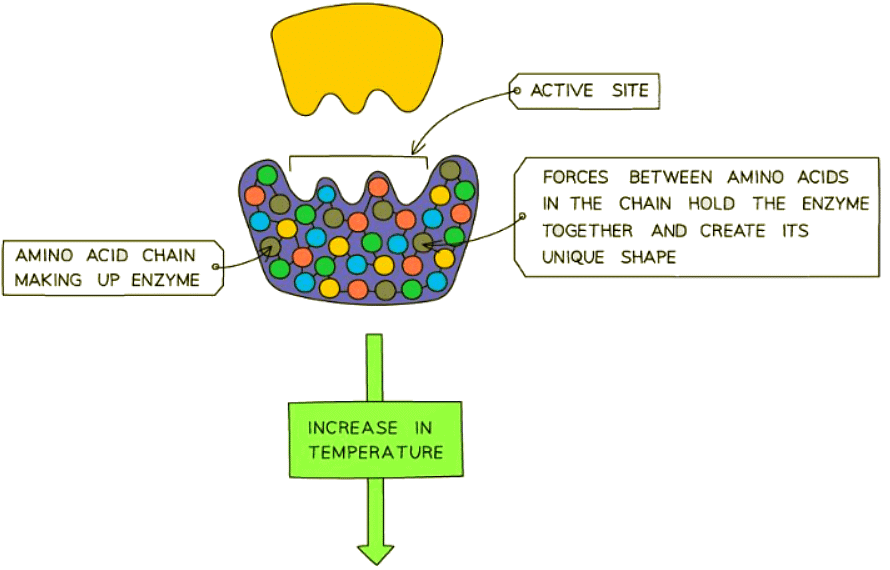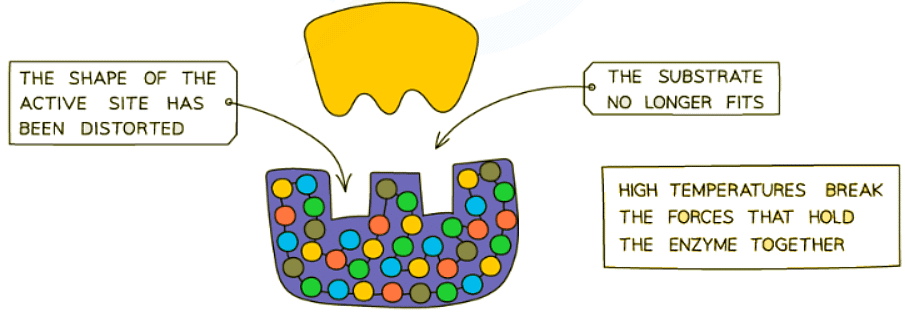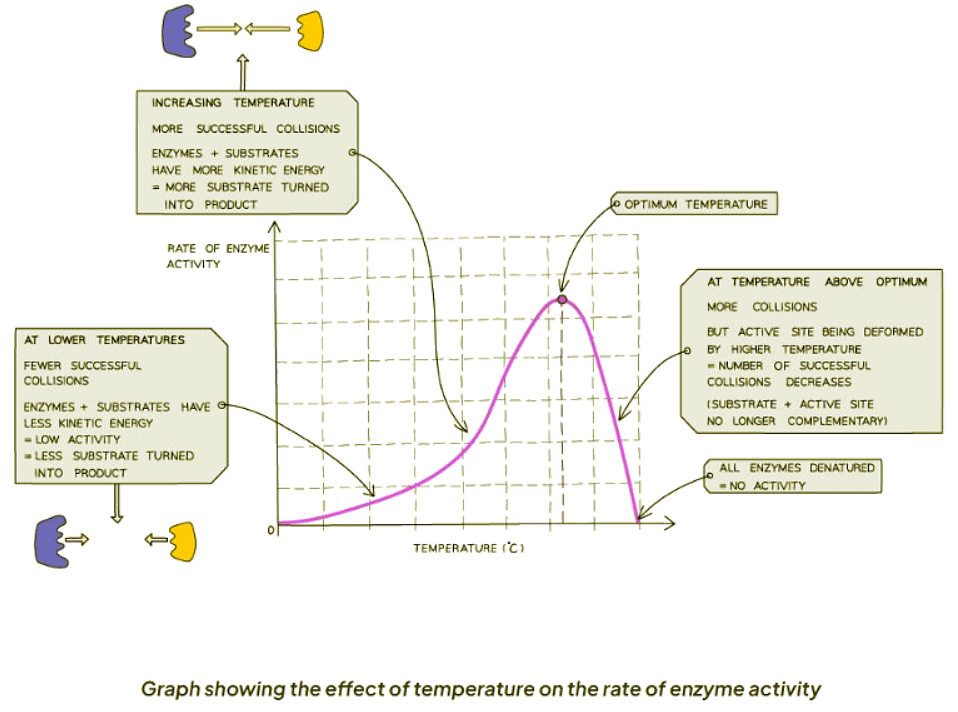Class 10 Exam > Class 10 Notes > Biology for GCSE/IGCSE > Enzymes & Temperature
Enzymes & Temperature | Biology for GCSE/IGCSE - Class 10 PDF Download
Enzymes & Temperature: Extended
- Enzymes, being proteins, possess a specific shape upheld by bonds.
- This structural specificity is particularly critical around the active site, ensuring that the substrate fits precisely, enabling the reaction to proceed.
- Enzymes exhibit optimal activity at their designated temperature, such as the human body's standard of 37⁰C.
- Excessive heating, surpassing the optimal temperature, disrupts these bonds, causing the enzyme to lose its shape—a phenomenon termed denaturation.
- Denatured enzymes lose their active site conformation, rendering them incapable of accommodating substrates.
- Denaturation is a permanent alteration; once enzymes undergo this process, they cannot recover their original shape, leading to a cessation of enzymatic activity.
Effect of Temperature on Enzyme Activity


- Increasing the temperature from 0°C to the optimum increases the activity of enzymes. This is because higher temperatures provide more energy to the molecules, causing them to move faster and increasing the number of collisions with substrate molecules. As a result, the rate of reaction speeds up.
- This means that low temperatures do not denature enzymes; they simply slow down the enzymatic activity.
Question for Enzymes & TemperatureTry yourself: What happens to enzymes when they are exposed to excessive heat?View Solution
The document Enzymes & Temperature | Biology for GCSE/IGCSE - Class 10 is a part of the Class 10 Course Biology for GCSE/IGCSE.
All you need of Class 10 at this link: Class 10
|
101 videos|193 docs|33 tests
|
FAQs on Enzymes & Temperature - Biology for GCSE/IGCSE - Class 10
| 1. How does temperature affect enzyme activity? |  |
Ans. Temperature can affect enzyme activity by altering the shape of the enzyme molecule, which in turn affects its ability to bind with the substrate. At low temperatures, the enzyme activity is usually low as the molecules move slowly and have less kinetic energy. As the temperature increases, the enzyme activity also increases until it reaches an optimal temperature where the enzyme is most active. However, at higher temperatures, the enzyme can denature and lose its shape, leading to a decrease in activity.
| 2. What happens to enzymes at high temperatures? |  |
Ans. At high temperatures, enzymes can denature, meaning they lose their three-dimensional shape and can no longer function properly. This is because the high temperature breaks the bonds that hold the enzyme's structure together, causing it to unravel and become inactive. Denatured enzymes are unable to bind with their substrates, leading to a decrease in enzyme activity.
| 3. How does temperature affect the rate of enzyme-catalyzed reactions? |  |
Ans. Temperature affects the rate of enzyme-catalyzed reactions by influencing the kinetic energy of the molecules. As temperature increases, the molecules move faster and collide more frequently, increasing the chances of successful enzyme-substrate binding. This leads to an increase in the rate of the reaction. However, if the temperature is too high, the enzyme can denature, slowing down or stopping the reaction altogether.
| 4. What is the optimal temperature for enzyme activity? |  |
Ans. The optimal temperature for enzyme activity varies depending on the enzyme. Generally, enzymes from human bodies function best at around 37 degrees Celsius, which is the normal body temperature. However, some enzymes found in extremophiles can function optimally at much higher or lower temperatures, depending on the environment they are adapted to.
| 5. Can extreme temperatures have a permanent effect on enzymes? |  |
Ans. Yes, extreme temperatures can have a permanent effect on enzymes by denaturing them irreversibly. Once an enzyme is denatured, it cannot regain its original shape and function. This can lead to a loss of enzyme activity, which can impact various biological processes that rely on enzyme-catalyzed reactions.
Related Searches
















